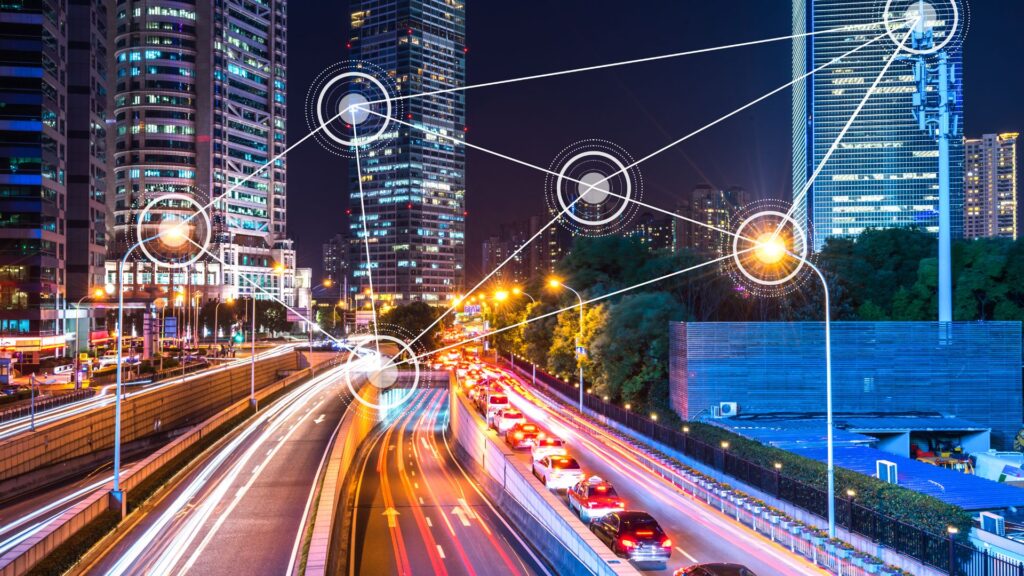Introduction
Smart cities have long been discussed as the future of urban living, but in 2025, they are no longer just visions on a blueprint—they are becoming a reality across the globe. From Europe to Asia and the Middle East, governments and tech companies are collaborating to design cities that use data, artificial intelligence, and sustainable technologies to improve the quality of life for millions of residents.
These smart cities are powered by interconnected infrastructure, autonomous transport, digital governance, and renewable energy. However, while the innovations are groundbreaking, they also bring challenges related to privacy, inequality, and security. This article examines the rise of smart cities in 2025, their impact on daily life, and the questions they raise for the future.
What Makes a City “Smart”?
A smart city integrates technology into every aspect of urban living. This includes transportation systems, energy grids, waste management, healthcare, and governance. The backbone of a smart city is data—collected through sensors, IoT devices, and AI-driven platforms.
For example, traffic lights in a smart city can adjust in real time to reduce congestion, while buildings can automatically regulate energy usage to minimize waste. Residents can interact with government services through apps, making everything from paying taxes to booking medical appointments seamless.
By 2025, cities like Dubai, Singapore, Copenhagen, and Seoul are leading the way in smart city development, offering glimpses of what future urban living could look like worldwide.
Technology Driving Smart Cities
Several technologies form the backbone of smart city innovations:
-
Artificial Intelligence (AI): AI algorithms analyze data to predict traffic, manage energy consumption, and monitor public safety.
-
Internet of Things (IoT): Billions of devices are connected to networks, sharing information and optimizing systems in real time.
-
5G Connectivity: Super-fast internet ensures seamless communication between devices, vehicles, and infrastructure.
-
Renewable Energy Systems: Solar, wind, and green hydrogen power entire districts, reducing reliance on fossil fuels.
-
Autonomous Transport: Self-driving buses, cars, and drones are revolutionizing mobility.
These technologies do not work in isolation—they are interconnected, creating an urban environment where systems communicate to make life more efficient and sustainable.
The Benefits of Smart Cities
The promise of smart cities is vast. Residents enjoy reduced traffic congestion, cleaner air, efficient public services, and safer neighborhoods. Energy-efficient infrastructure cuts costs and emissions, while digital platforms make urban life more convenient.
Smart healthcare systems, for example, allow for remote monitoring of patients, reducing hospital visits and improving outcomes. Similarly, education platforms integrated into city systems provide personalized learning opportunities for students.
For businesses, smart cities create opportunities to innovate and grow. Startups and tech firms thrive in these environments, testing new solutions that can then be exported to other regions.
Challenges Facing Smart Cities
Despite their potential, smart cities face serious challenges. One of the biggest concerns is privacy. With millions of sensors collecting data, questions arise about how that data is stored, used, and protected. Citizens worry about surveillance and the misuse of personal information.
Cybersecurity is another challenge. A hack into a city’s infrastructure could paralyze transportation systems or disrupt energy grids. As cities become more connected, they also become more vulnerable to attacks.
Inequality is also a concern. While wealthy nations may build futuristic smart cities, poorer countries risk being left behind. Even within smart cities, benefits may not be evenly distributed, creating divides between tech-enabled communities and those without access.
Global Examples in 2025
Several smart cities in 2025 stand out as global leaders:
-
Dubai: Known for its futuristic vision, Dubai is testing flying taxis and AI-driven governance.
-
Singapore: A pioneer in urban planning, Singapore integrates AI into traffic management, healthcare, and housing.
-
Copenhagen: Focused on sustainability, the city aims to become carbon-neutral by 2025 with smart energy systems.
-
Seoul: South Korea’s capital combines digital governance with citizen engagement through apps and real-time communication platforms.
These examples highlight different approaches—some focusing on sustainability, others on efficiency, and some on futuristic innovation.
The Human Element in Smart Cities
While technology is the foundation, the success of smart cities depends on people. Public engagement and trust are critical. Governments must be transparent about data usage and involve citizens in decision-making.
Cultural factors also matter. What works in one city may not work in another. For instance, Scandinavian countries prioritize sustainability, while Gulf states focus on innovation and luxury. A smart city must reflect the values and needs of its population, not just technological possibilities.
FAQs
Q1: What are the main features of a smart city?
A smart city uses technology to improve services like transportation, energy, healthcare, and governance, powered by data, AI, and IoT.
Q2: Which countries are leading in smart city development?
Singapore, Dubai, Copenhagen, and Seoul are global leaders, each focusing on unique aspects like sustainability, AI governance, and futuristic mobility.
Q3: Are smart cities safe from cyberattacks?
While advanced security measures are in place, smart cities remain vulnerable to cyber threats, making cybersecurity a top priority.
Q4: Will smart cities increase inequality?
There is a risk that benefits will not be evenly distributed, but inclusive policies can ensure equal access to smart city services.
Q5: How do smart cities help with climate change?
By using renewable energy, reducing waste, and managing resources efficiently, smart cities contribute to lowering carbon emissions.
Conclusion
Smart cities in 2025 are no longer futuristic concepts—they are here and expanding rapidly across the globe. While they promise cleaner, safer, and more efficient living, they also raise questions about privacy, security, and inclusivity.
The future of urban life will depend not only on technology but also on governance, public trust, and international cooperation. As the world’s population continues to urbanize, smart cities may become the blueprint for sustainable living in the 21st century.






